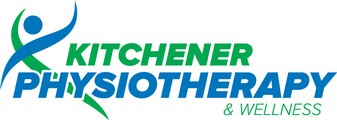Q: If I have arthroscopic surgery to stabilize my chronically dislocating shoulder, what kind of rehab should I expect? The surgeon will use an all-arthroscopic "bony bank bridge" method of reconstruction.
A: Surgeons from the Steadman Philippon Research Institute in Colorado recently wrote about their experiences using of an all-arthroscopic Bony Bankart Bridge (BBB) surgical technique for chronic shoulder instability. It was a fairly small study with only 15 patients. This is a fairly uncommon injury and the all-arthroscopic procedure is just starting to replace an open incision technique. But the information offered may be helpful to you.
A chronically unstable shoulder means the shoulder continues to dislocate over and over. Pain, fear of movement that might cause another dislocation, and loss of function for daily activities can really affect your lifestyle and quality of life. With each dislocation can come further damage to the soft tissues and especially the bony rim around the shoulder socket.
Some people report up to 10 or more repeat dislocations. These microtraumas cause the bony rim around the shoulder socket to break away taking with it the attached soft tissues. Studies have shown that a loss of 20 per cent (or more) of the bony rim significantly increases contact pressure (bone on bone). This type of bone loss also reduces resistance to dislocation. And with this type of bone deficiency, there is a high rate of failure after surgical repair of the soft tissues.
The Bony Bankart Bridge (BBB) addresses the bone loss by reattaching the bone fragment back into its "donor bed" (original place). A special bridging technique using push-lock knotless suture anchors reconstructs the shoulder and restores stability. There is no hardware where the two bony edges meet (where healing takes place). The surgeon also repairs any soft tissue damage to the capsule, labrum, and glenohumeral ligament. Care is taken to avoid tilting the bony piece, which could lead to over- or under-correcting the problem.
The greatest significance of this technique is that it was done completely by arthroscopic techniques. In other words, no open or large incisions were made to give the surgeon access to the area. All-arthroscopic procedures are becoming more common now even for difficult-to-treat problems like this one. The goal of this treatment is to restore the surface area of the shoulder socket and prevent any more dislocations.
The rehab protocol after surgery may vary somewhat from one surgeon to another. What you will likely experience is a short period immobilized in a sling (one to three weeks). The length of time in the sling and the speed at which you are advanced in the rehab program depend on three things: 1) fracture severity and location, 2) presence of other soft tissue injuries (joint capsule, labrum, ligaments), and 3) exact techniques used in the surgical procedure.
Passive range of motion (the physiotherapist moves your arm) is started early on (in the first week). The therapist will gradually progress you to active assisted motion, then full motion, and then onto strengthening exercises. Typically, strength training doesn't begin until the tissues have established good healing (usually six to eight weeks after surgery at the earliest).
Three to four months after the procedure, you will be able to return fully to your everyday activities. If you want to participate in physical activities, sports, or recreational/leisure activities, then it must be noncontact until six months after surgery. Your surgeon will let you know when it is safe to engage in full contact (or throwing) sports if that is of interest to you.
Reference: Peter J. Millett, MD, MSc, et al. The "Bony Bankart Bridge" Technique for Restoration of Anterior Shoulder Instability. March 2013. Vol. 41. No. 3. Pp. 608-614.
WE OFFER DIRECT BILLING TO
MOST INSURANCE COMPANIES
MOST INSURANCE COMPANIES
Physiotherapy - Massage Therapy - Shockwave








